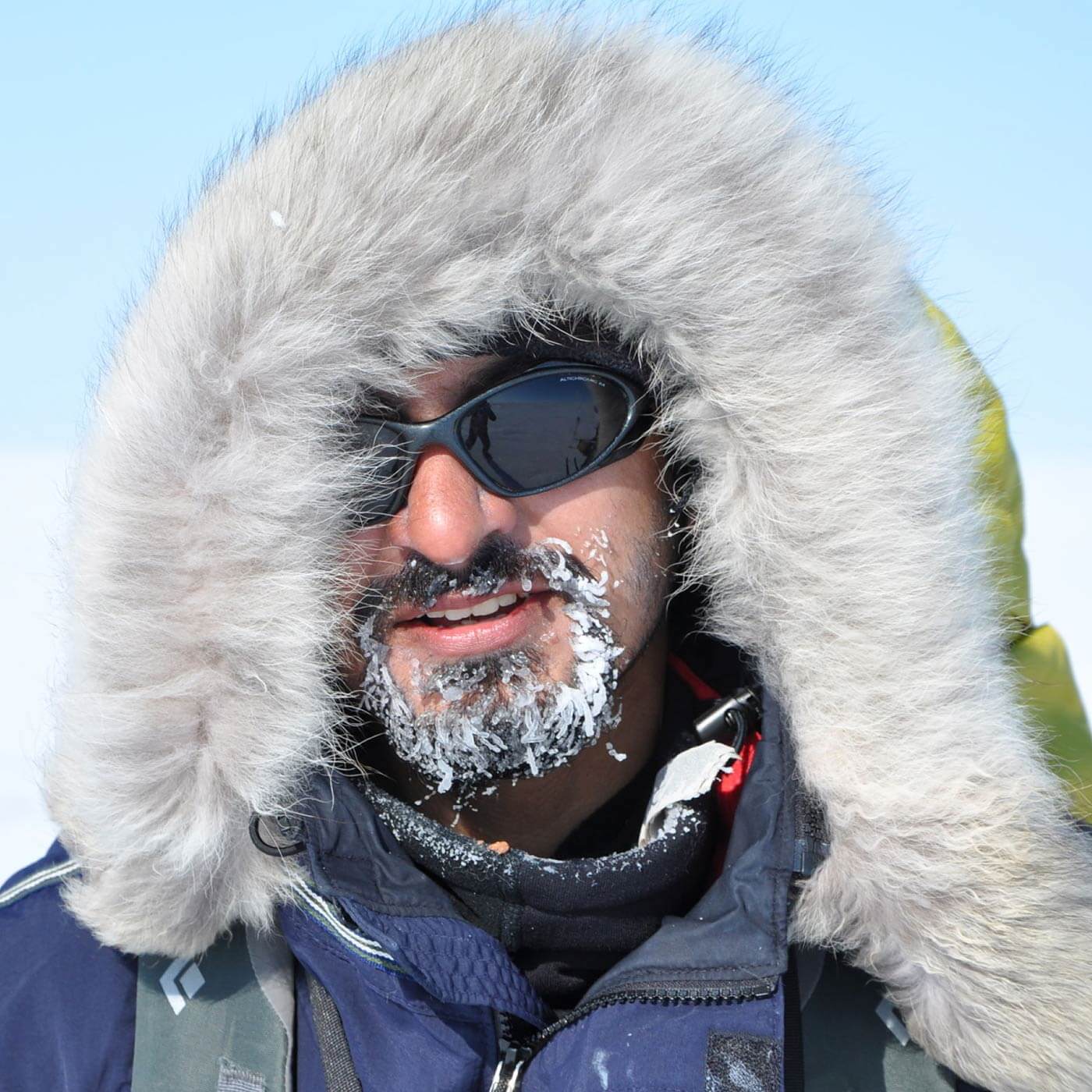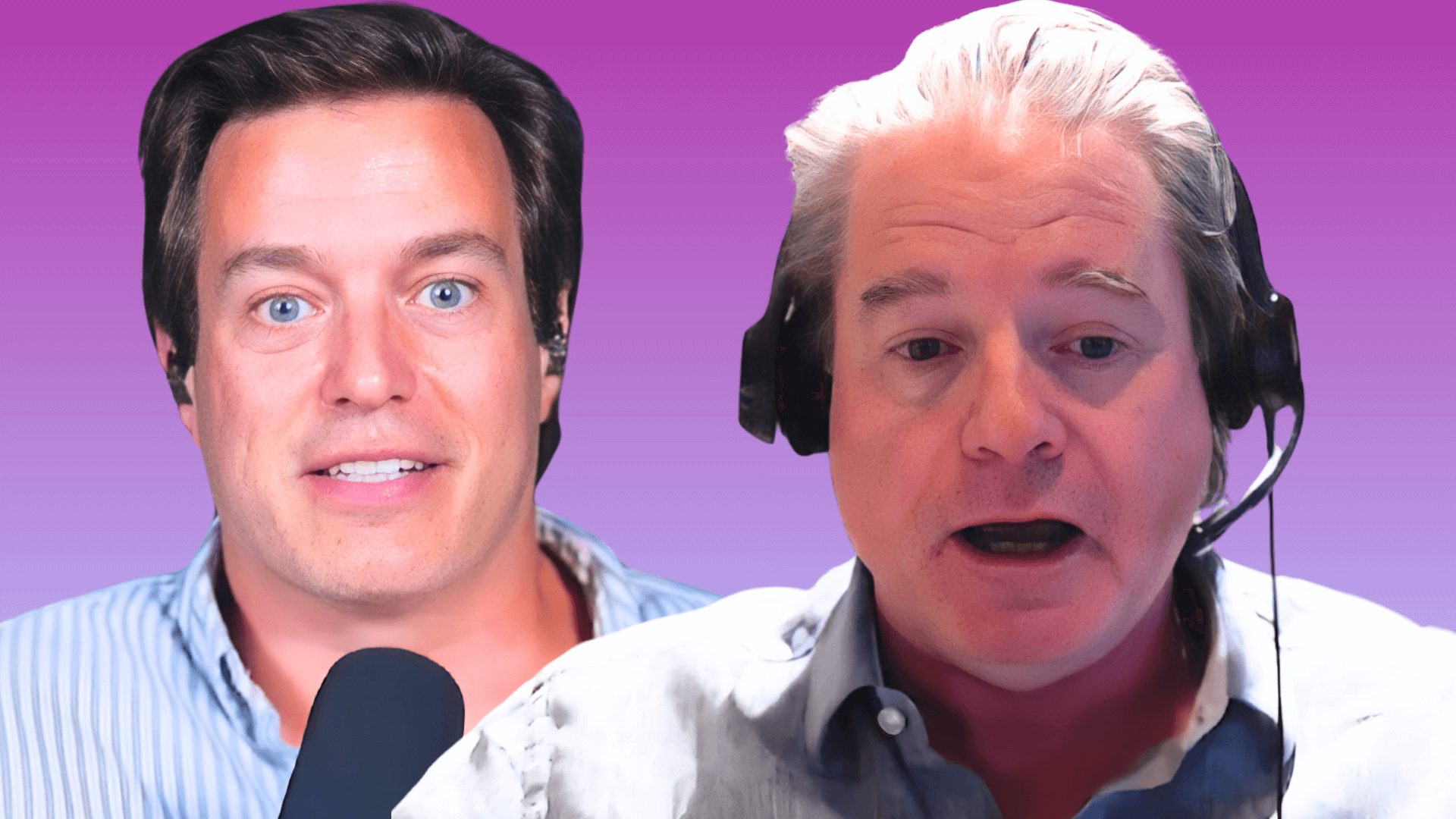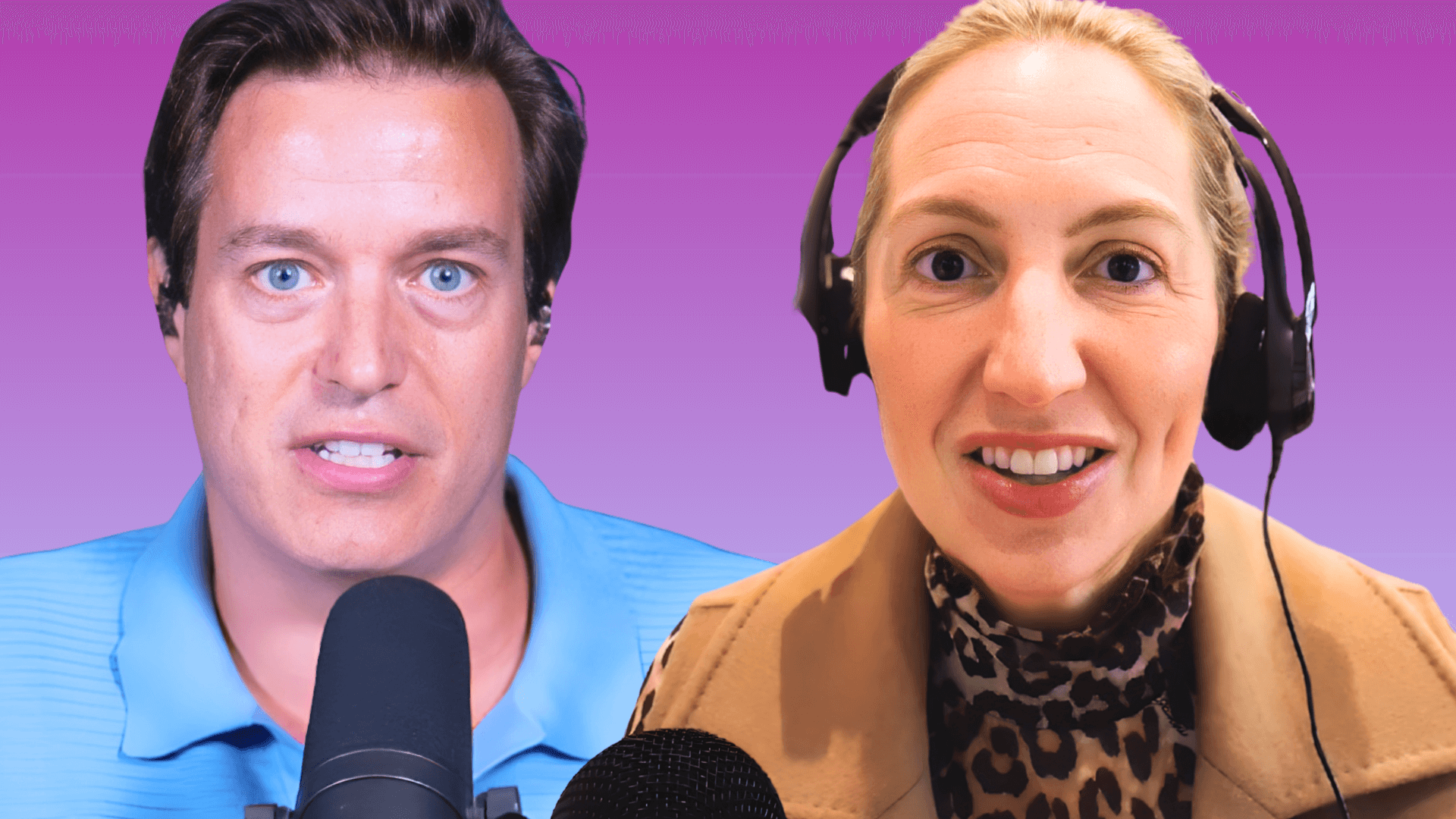Akshay Nanavati (@fearvanalife) was on the brink of suicide, but overcame drug addiction, alcoholism, and PTSD from fighting in Iraq with the US Marines. He is the author of Fearvana: The Revolutionary Science of How to Turn Fear Into Health, Wealth, and Happiness.
The Cheat Sheet:
- Why might a Marine veteran be thankful for falling in with the wrong crowd and dabbling with drugs and alcohol at an early age?
- What is a worthy struggle, and how can enduring hardship with others be a bonding experience?
- Why our negative emotions are often our greatest gift.
- What is second dart syndrome, and why does Akshay consider it “the most destructive disease of the mind?”
- What is the LMNOP cycle, and how can it help people with PTSD?
- And so much more…
[aoc-subscribe]
(Download Episode Worksheet Here)
While we all have the desire to be happy, the path that gets us to happiness isn’t always clear. Along the way, we encounter countless obstacles — from self-doubt to fear to trauma. How we choose to cope with these obstacles either strengthens us to soar past them, entangles us indefinitely, or terminates the journey altogether.
When alcoholism failed to help Akshay Nanavati cope with post-traumatic stress disorder (PTSD) he developed as a Marine fighting in Iraq, he found himself on the brink of suicide. What happened next led to his first book: Fearvana: The Revolutionary Science of How to Turn Fear into Health, Wealth, and Happiness. Listen, learn, and enjoy!
More About This Show
Falling in with the wrong crowd as a teenager upon moving to the United States from India, FEARVANA: The Revolutionary Science of How to Turn Fear into Health, Wealth, and Happiness author Akshay Nanavati is grateful for his youthful indiscretions that included dabbling in drugs and alcohol.
“If I had found a group of people who, let’s say, were ultra-runners or mountain-climbers…I probably never would have joined the Marines,” he says. “Getting out of this very selfish and meaningless existence is what had me get into the Marines. Because in the Marines, you live for the good of the group. The well-being of the group matters way more than your individual self.”
The fact that Akshay summoned the resolve to enlist in the Marines from this shaky start is a surprising enough turn of events. What’s even more surprising is, when one doctor told him bootcamp would be the death of him thanks to thalassemia — a rare blood disorder, he went to another doctor to get clearance.
A Worthy Struggle
In spite of putting his enduring parents through a roller coaster ride of emotions — from his tumultuous teen years to joining the Marines during wartime — Akshay insists he had the best of everything they had to offer. But he confesses that growing up with a lack of struggle may have led him to creating his own.
“I feel like karma might come back and hurt me — that my kids are probably going to be a nightmare like I was to my parents,” he says. “I obviously hope they don’t make the mistakes that I made, but I do want them to learn the value of struggle.”
To Akshay, a worthy struggle could mean anything from joining the military to building a business to running a marathon to raising a child to climbing a mountain to playing chess to training for a sport; the important thing is understanding that as hard as adversity may be, it’s one of the greatest gifts we have. “The real value is when you seek it out in service of something,” he says.
The Family That Suffers Together…
Akshay doesn’t imagine putting his kids through struggle while standing on the sidelines and passively watching it happen.
“I definitely see myself…taking them out in the cold, suffering with them. I think it’s a great bonding way,” he says. He goes on to quote MMA fighter, Men’s Health author, and fitness leader Bobby Maximus: “A family that suffers together stays together.”
On a social level, it parallels with his experience in the Marines — though the stakes for he and his brothers in arms in a war zone were arguably higher.
The Lowest Point
While training in the Marines, Akshay and his friend campaigned to get their deployment to Iraq together. As it turned out, his friend was sent ahead of — and separate from — him. When this friend was killed by an IED (improvised explosive device), it devastated Akshay.
“I always felt that if I went there with him, maybe I could have…been in that seat so he could have come back home to his fiance,” says Akshay.
When he did finally get deployed to Iraq, Akshay wasn’t expecting to return — to the point where he gave away all of his possessions. When he did make it back (and had to awkwardly ask for the return of those possessions), he was stricken with survivor’s guilt. So many people he knew — in his estimation, worthier people — hadn’t been so lucky.
Like many veterans, Akshay was diagnosed with PTSD (post-traumatic stress disorder). A return to substance abuse was how he coped, and when he woke up after a five-day vodka bender and considered taking his own life, reason prevailed; he instead went on a quest researching neuroscience, psychology, and spirituality not only to heal himself, but to figure out what constitutes a happy and meaningful life for most of us.
Follow the Struggle, Not the Passion
“There’s not such a thing as a stress-free life,” says Akshay, “but that’s not a bad thing if you find a worthy stress. So your goal is seeking out the right kind of stress for you. What does being a champion look like for you? Ask yourself: ‘What struggle am I willing to endure to get there? What’s the level of suffering I’m willing to endure?’ Because that question will teach you more than asking yourself, ‘Oh, what’s my passion, and should I follow this joy and how can it be all great?’ Because it won’t be all great! It will be hard.”
Fear Does Not a Disorder Make
Everyone feels fear, stress, or anxiety at some point in their lives. Most of us have been conditioned to believe these are negative emotions. We are told things like “Don’t be scared,” or “Be fearless,” or “Become stress-free” or we attach the word “disorder” to stress and anxiety. This is highly destructive because when people inevitably feel these emotions, they start to feel like there is something wrong with them. This sends them into a damaging downward spiral of negative self-talk.
The truth is that there are no bad or good emotions; there are only emotions and it’s up to us to decide what we do with them. In fact, it is our seemingly “negative” emotions that are often our greatest gifts. As Dr. Martin Seligman, a leading researcher in the positive psychology movement says, “A life without anxiety, frustration, competition, and challenge is not the good life.”
“And now I learned to transform these emotions into something useful,” says Akshay. “Even my survivor’s guilt, for example. I have a picture of my friend on my wall that says, ‘This should have been you. Earn this life.’ And my guilt became something of value to me…it’s what helped me finish my book; it’s what helped me sober up. It’s helped me say, ‘I’ve been gifted with this life.'”
Reframing the lens through which he views the world, Akshay has since changed the quote to ‘Honor his death. Live this life.’
How Do We Cultivate Courage?
When he turned 33, Akshay ran 33 miles to celebrate. And while there was quite a bit of suffering involved, he insists it was beautiful because “it was a far better way to celebrate than downing 33 shots!”
So fitness is one way Akshay recommends for cultivating courage.
“In exercise, you can push yourself — it’s something almost anybody can do everywhere — you can constantly go through these moments where it becomes a true test of will over fitness. You hit a moment where one part of you wants to quit and the other wants to keep fighting. And when you do that, you will rise above yourself to do it.”
Meditation is another way we might cultivate courage.
And Marines drill to inoculate themselves against stress so when stressful situations present themselves in the real world, they’re ready for it.
“The key is mastering that space between stimulus and response,” says Akshay.
But really, courage can be cultivated by engaging in anything that pushes us outside of our comfort zone — far enough to grow, but not so far that we’re paralyzed against trying again. Akshay reminds us that he went from being afraid of ferris wheels to rock climbing without safety gear. But it was a journey, not an overnight success story.
“Whatever your line of risk is, relentlessly become aware of that and push yourself one step at a time,” Akshay says. “I call it the action awareness cycle.”
Second Dart Syndrome
Neuroscience and spirituality have both shown we don’t control what first shows up in our brain. When we stand on the edge of a cliff, it’s very normal and human to feel fear. Yet we all judge our emotions and label some as good, and others as bad. Akshay calls this second dart syndrome.
“Buddha said we are all stabbed by two darts,” says Akshay. “First darts are the ones beyond our control. They can be an external event or our automatic, internal response to them, like fear on the edge of a cliff. Second darts are the manner in which we react and respond to the first ones. For example, when you stub your toe against a door, the first dart is the pain in your toe. The second dart is when you say things like, ‘I am stupid,’ ‘This door is stupid,’ or ‘Why does God do this to me?’
“Stepping outside of that destructive spiral is what allows you to embrace any emotion, find value in it, and ultimately channel it into purposeful action.”
Akshay considers having the picture of his friend always within sight as just one example of how he breaks away from the dangers of second dart syndrome.
“Guilt once drove me to the brink of suicide; today it drives me to constantly become a better version of myself.”
LMNOP: A Five-Step Formula to Build New Habits and Rewire the Brain
LMNOP is one of the most powerful tools Akshay has created for changing the brain. It has helped people with PTSD, anxiety disorder, addiction, depression, daily stress, fear, food cravings, and procrastination, among other things. Here’s how it works.
L: Label and Language — Dr. Matthew Lieberman, a psychology professor at UCLA, has shown that labeling an emotion reduces activity in parts of the brain related to fear and emotions. Simultaneously, it increases activity in parts of the brain associated with focus and processing emotions.
Any time you find yourself stuck, label the negative emotion you are experiencing to release yourself from the impact of it (step one of mindfulness). Then immediately shift your body language into a position that facilitates feelings of confidence (e.g., if you’re slouching, sit up straight).
M: Meaning — Psychologists like Dr. Michael Gazzaniga have shown that the subconscious is constantly assigning a meaning to everything without our awareness. In this step, the goal is to find out what that meaning is.
Emotions and events have no inherent meaning; the meanings we assign shape our experience of life. Ask yourself what meaning you have attached to the event, the emotion, or both.
N: It’s Not You; It’s Your Brain — Neuroscience has proven we don’t control what first shows up in our brains. This step separates you from your subconscious so you can start to direct your mind to where you want it to go.
Tell yourself: “This is not me; this is my brain, beyond my control.”
O: Opt for the More Empowering Meaning — This is when you choose outside of your negative emotion by using your conscious self to ascribe a new meaning either to the emotion, the event, or both. This, combined with the next step, will start to create new neurological pathways in your brain.
P: Purpose and Preemptive Strikes — Take an action aligned with your true purpose, and continue ingraining the new behavior with preemptive strikes.
THANKS, AKSHAY NANAVATI!
If you enjoyed this session with Akshay Nanavati, let him know by clicking on the link below and sending him a quick shout out at Twitter:
Click here to thank Akshay Nanavati at Twitter!
Resources from This Episode:
- Worksheet for this episode
- FEARVANA: The Revolutionary Science of How to Turn Fear into Health, Wealth, and Happiness by Akshay Nanavati
- Akshay Nanavati’s website
- Akshay Nanavati at Facebook
- Akshay Nanavati at Instagram
- Akshay Nanavati at Twitter
- Thinking, Fast and Slow by Daniel Kahneman
- Thalassemia (Akshay’s rare blood disorder)
- Black Hawk Down (movie)
- Peak: Secrets from the New Science of Expertise by Anders Ericsson and Robert Pool
- Dr. Anders Ericsson | Science of Expertise (Episode 513)
- Flow: The Psychology of Optimal Experience by Mihaly Csikszentmihalyi
- Bobby Maximus
- The Theory of Moral Sentiments by Adam Smith
- The Power of Habit: Why We Do What We Do in Life and Business by Charles Duhigg
- The Psychology of Man’s Possible Evolution by P. D. Ouspensky
- Man’s Search for Meaning by Viktor E. Frankl
- Dean Karnazes | The Road to Sparta (Episode 623)
- Cal Newport | Deep Work (Episode 515)
- Cal Newport | So Good They Can’t Ignore You (Episode 482)
- Susan David | Emotional Agility (Episode 676)
You’ll Also Like:
- The Art of Charm Challenge (click here or text AOC to 38470 in the US)
- The Art of Charm Bootcamps
- Elite Human Dynamics
- Best of The Art of Charm Podcast
- The Art of Charm Toolbox
- The Art of Charm Toolbox for Women
- Find out more about the team who makes The Art of Charm podcast here!
- Follow The Art of Charm on social media: Instagram | Twitter | Facebook
On your phone? Click here to write us a well-deserved iTunes review and help us outrank the riffraff!




